So you went to a tradeshow and heard about this cool new idea called the Internet Of Things; now it’s time to build an IoT product of your own. You know that to be IoT, your Widget D’lux® has to have a network connection but which to choose?
You could use WiFi or Bluetooth but that would be gauche. Maybe LoRaWAN? All the cool kids are using LoRa for medium or long range wireless these days, but that still requires a base station and Widget D’lux® will be a worldwide phenomenon. Or at least a phenomenon past your bedroom walls. And you know how much user’s hate setting things up. So a cell modem it is! But what do you have to do to legally include one in your product? Well that’s a little complicated.
We’ve talked about government certification testing before (seriously, go read that article. Bob did a great job!) and it’s entirely relevant here but cell modems add a couple layers to that onion. There are a bunch of entry points to this discussion so let’s pick one and dive in.
Certification: Intentional, Unintentional, Multiple
So what kind of government certification will you need before you can ship your product? There are a few. If you plan to turn your cell radio on the entire device will need to be certified for intentional radiation to make sure that the radios you intend to use are well-behaved (don’t emit too much energy for given frequency bands). If you plan to turn on Widget D’lux® at all than it will also need to be checked for unintentional emissions to make sure there isn’t too much electromagnetic energy you didn’t mean to transmit. If you want to add another radio like Bluetooth or WiFi there’s also multi-radiator certification to look for problems caused by multiple radios operating at once.
Fortunately there are some tricks which might make that process easier. Testing and certification for multiple radiators is only relevant when more than one is on at once. Maybe the application can be adjusted so that you don’t actually need, say, Bluetooth at the same time as the cell connection? Or only turn the WiFi radio on when the cell signal falls below a certain strength and the radio is subsequently disabled? As long as there’s only ever one transmitter on at a time then you shouldn’t need to pursue additional certification. Though if there is ever a case where they can both be on at once it needs to be appropriately certified.
An even more specific exception is using WiFi to gather access ESSID’s and MACs to help with geolocation. Actively scanning for APs might be faster but if you stick to a passive scan the WiFi radio never transmits. No extra certification required.

Alternatively some modular certifications (we’ll get to that in a moment) allow you to avoid dual radiator certification if antennas of different radiators are placed far enough apart (here’s an example with a 20cm separation). Specific information about this may be in a given device’s FCC grant like that one. (Note! Talk to your NRTL about this! Reading the linked grant closely makes it unclear what the requirements actually are. At the end of the day the Test Engineer at your lab of choice will have to sign off on your test results so their opinion might be most important)
There is also an entire list of device types which are exempt from certain types of emissions tests. For instance certain kinds of appliances and automotive devices don’t require testing. Though if they have intentional radiators they must still comply with those the relevant laws. So devices like underglow for your very classy body kit probably don’t need to be tested so long as there isn’t a Bluetooth app for configuration.
We won’t go into more detail about how these tests are performed. Again, refer to Bob’s article on FCC testing for more detailed information.
Cell Specific Certification: PTRCB
Ok! If that’s not enough for you there are a couple more cellular-specific certifications you’ll need too: PTRCB and/or carrier certification. The FCCs job is to make sure that your device plays nicely with everyone else’s and the airwaves are generally available to be shared. They do not care whether or not your device actually works (though they do care if it breaks due to ESD sensitivity!). The cell carriers on the other hand need to make sure that your device obeys their network specifications so that you don’t cause a general degradation of service.
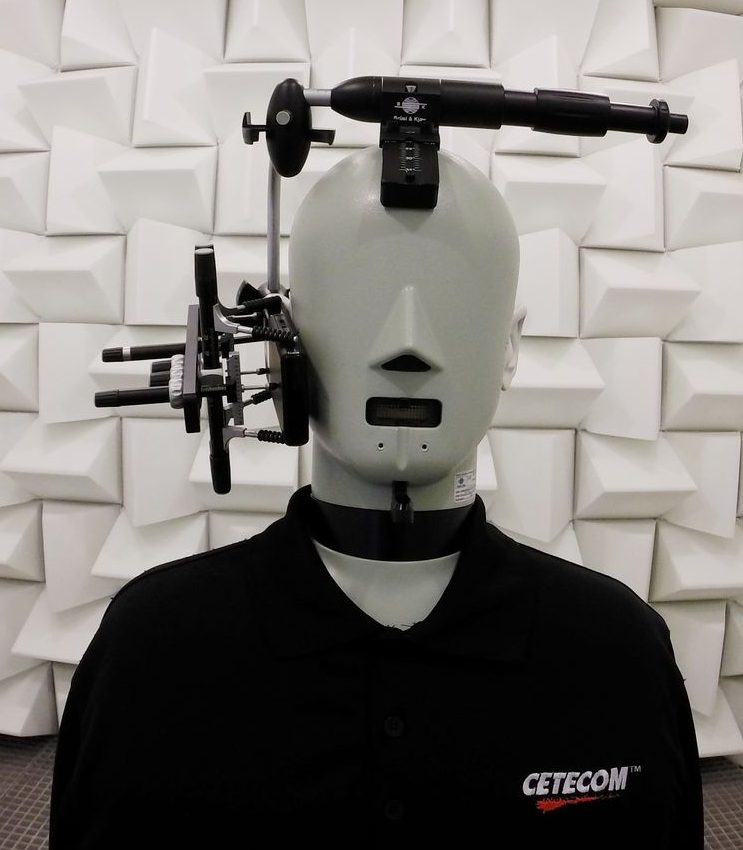
The end goal here is really carrier certification, which means that the certified device has been tested to work with the specific blend of herbs and spices that, say, Verizon requires. A carrier certification is specific to that network though for many carriers (in the US, AT&T, T-Mobile, and Sprint) getting this certification is actually a superset of the testing done to specifications from a body called the PTRCB. Surprise! The PTRCB was founded by a consortium of carriers to help test and regulate cell devices.
Whew! Still excited to bring Widget D’lux® to the hungry masses? No? But we haven’t even talked about cost and time (tens of thousands of dollars and up to tens of weeks)! Do I hear you begging for an easier answer? That doesn’t sound like much fun, but I guess we can explore other options.
The magic words are “modular certification.” Cell modems come in all shapes and sizes, from raw modems and RF components through development kits designed to plug into a breadboard. In the middle there is a sweet spot where cell modems are available as modules which are designed to be permanently installed in an end device. In their most complete form such modules include all RF related hardware.
For all the certification content above except unintentional radiation modules can be variously approved for modular end device use. Sorry, that’s still a messy description. Electrically, components can be FCC tested and certified for use as intentional and unintentional radiators inside other products AKA “for modular use”. As long as you obey the conditions of the FCC certification grant, like not placing another intentional radiator too close, the certification carries through to the end device. Modules can be similarly carrier tested for end device use. So sticking to very certified modules get you most of the way to a shippable device.
Integrating a Cell Modem into a Product
There are a few ways to integrate a cell modem and fortunately they don’t all have the same regulatory burden.
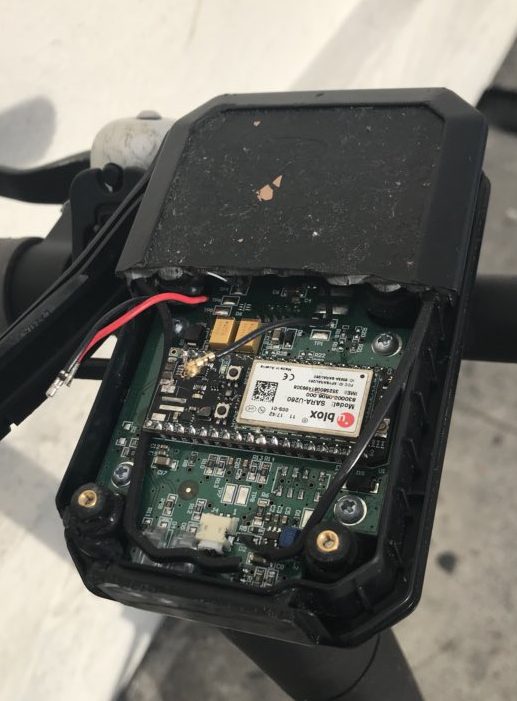
Devkits and Bailing Wire
For prototyping and very low volume products gluing a development kit to the rest of a system might be enough to get a system out the door. There are a few options in this space, with Particle’s Electron being probably the best known. This is probably a fine option when starting out but often more consumer/prototype oriented development kits won’t be available in quantity from suppliers, may not be as robust for long term installation, and may not be certified appropriately for use in a commercial device. But that doesn’t mean they’re impossible to use.
As Make noticed the first generation scooters retrofitted by Bird (currently valued at over $2 billion) contain, amazingly, a Particle Electron on their mainboard at the top of the scooter! From the photo it looks like it’s USB and JST battery connector have been removed and the entire daughterboard may be soldered down into the scooter. But hey, I guess a shipping product is the most important thing!
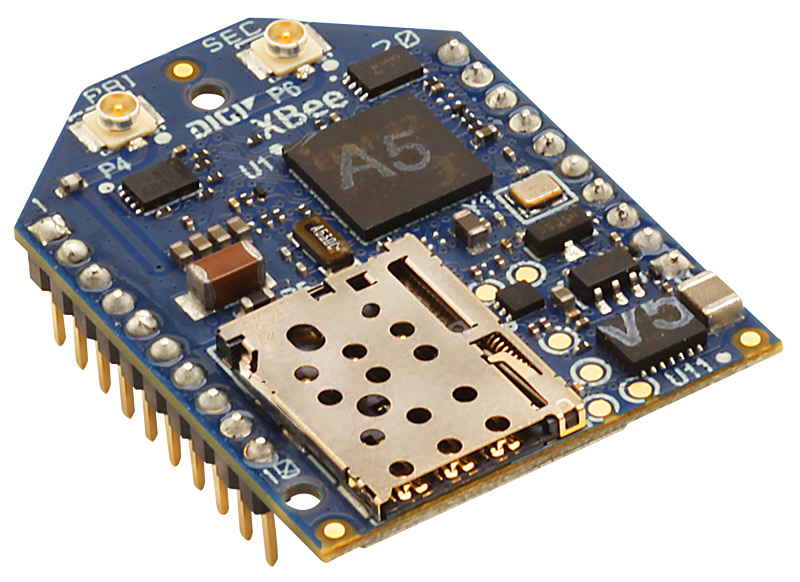
Module Down
There’s a lot of other text in this article but the one liner explanation of the easiest way to integrate a cell modem into a product is “use a module.” As mentioned above modems are sold packaged with many/most of their RF bits as modules. Whether they use through holes, castellations, or a nasty land grid array, these are designed to be permanently installed in an end product. If you choose one that has the correct certifications (AKA all of the certifications), dropping in a module is the fastest practical way to go to market, though prices will probably be higher than sourcing a bare modem.
What’s inside the module? It depends. Some are just a modem with support circuitry and a standardized mounting pattern. Others include another microcontroller and might be capable enough to be the main application processor for your system. There are a few other handy benefits for going the modular route:
- If a vendor has a standardized pin arrangement, using a module may offer an upgrade pathway in the future as cell technologies change. This is a headline feature of MultiTech and Digi modules.
- If a module adds another micro they may also add a nice wrapper around the raw AT commands that the modem probably speaks. This might make it easier to open TLS wrapped sockets, send text messages, etc. Modules from Particle and Digi both offer this.
- Carriers will require that modems be kept up to date or they’ll kick you off their network. Modules with onboard microcontrollers may be able to update themselves with little to no intervention on the developer’s part.
- Some vendors (Particle being a prime example) offer varying levels of cloud infrastructure which may make it easy to quickly get an application setup.
A selection of common module vendors are Particle (they have non devkit options too), Digi, MultiTech, NimbeLink, and Link Labs.
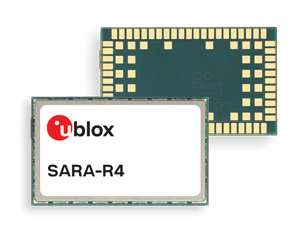
Modem Down
The companies which make and sell cell modems will happily sell them for use in end devices (what do you think is inside the modules?). But by buying a Telit or a u-blox or a Sierra module and dropping it on a board you’ll need to go through most of the arduous certification process. These vendors know how rough that process is and will help you figure out what tests to perform and who to talk to, but it will still be a costly and time consuming process. This complexity is why modular products exist in the first place; it’s is so difficult it’s a complete business.
All that aside using a modem directly will be cheaper than a module and the size can be minimized/customized to your application.
Chip Down
If you were building a very high volume product and really needed unusual features or the lowest possible cost, you could piece together the cell modem yourself. This is by far the most expensive, time consuming, and complex option. All certification would be required.
To Learn More
If you’re doing this for real it should be obvious by now that you’ll need to ask for some help. Expert help. One option is to hire a consultant. But another is to talk to a test lab. Not all labs will be amenable to being a living/breathing FAQ but some will. I’ve found that it’s a good sign when a lab is willing to be helpful, perhaps a useful trait to consider when choosing who to do business with. In the Bay Area there are lots of options. In no particular order I’ve known people to work with TÜV Rheinland, NTS (they had pizza and soda for customers, a big plus), Bay Area Compliance Labs, MET labs, and Cetecom. Ideally the lab you work with will also be the one you certify with.
Ready to bring Widget D’lux® to life? No? You want to go back to ESP8266’s and breadboards in a shoebox? That’s ok, maybe the world doesn’t need another IoT thermometer with targeted advertising.
Note: If it’s not obvious, this should be taken as advice of the casual kind. This is a trail of breadcrumbs leading to larger knowledge… but don’t launch a product based solely on what you read here.

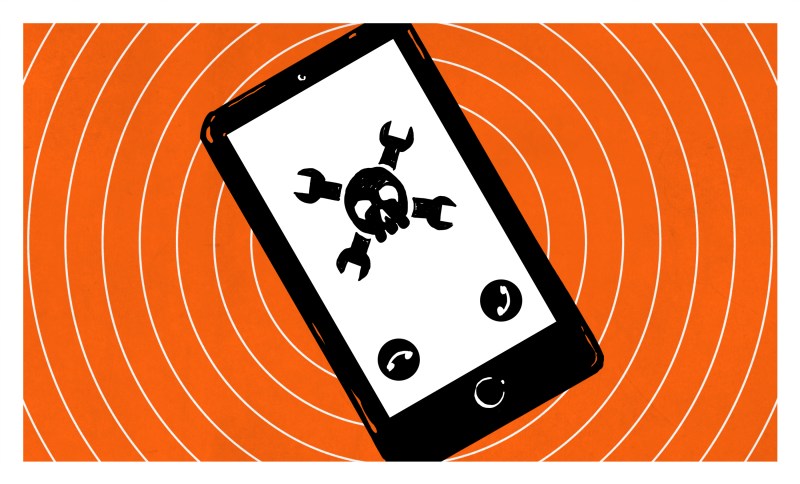














Even after all of the certification, and modular pre-compliance to help…
The carriers may still blacklist custom firmware/hardware without their own approval process stamp.
This article is somewhat optimistically backwards, as most of the time a company should start by talking with the carrier network operators first. Even so, it is a risky type of project, as telecom businesses will sometimes arbitrarily revoke hardware that may alter their current business goals. (many places simply do not have real antitrust laws for telecom)
“many places simply do not have real antitrust laws for telecom”
What an understatement! In most places, the relevant legislation and regulation are in fact the major telecom companies themselves, but wearing a skinsuit made from the defiled remains of a government three-letter agency.
Shameless self plug: Some of the modems Sierra Wireless has are pretty neat. You can write and run your own apps/firmware directly on the WP series of modems. They can also be used with a socket instead of being soldered down like on the mangoh red dev kit. It might be the closest thing available to an open source modem.
Digi and Multiconn have very nice parts for the business that is more price sensitive and doen’t need the gaurantees that companies like Pheonix Contacts make with their wireless products.
The land of cellular certifications is indeed challenging to navigate. Particle does offer a SoM version of the Electron called the E series, that is targeted at mass production. It comes fully certified as well – FCC, CE, IC, and PTCRB.
Our intention has always been to make it easy for makers, developers, as well as enterprise customers to go from prototype to production.
Disclaimer: I’m a Sr. HW engineer at Particle.
You forgot to mention your HaD worthy sculptures!
As a former director of engineering at an ODM, I’ve done multiple module, modem and even chip down products and until recently, the biggest stumbling block has always been the business relationship with the cellular providers. To cite one example, my first cellular IoT product was back in 2011 as part of a pilot program with Verizon and even though we had a lot of support within the company, the product has yet to see the light of day due to their internal machinations.
That is changing and companies like Particle are in part responsible for that.
His work is really incredible, isn’t it?
Thanks reminding us that we hadn’t really written up Mohit’s work before! I put together a post that may come up in the next few days.
That lump of text was really tough to read. Has the author (or editor) heard of punctuation? Very useful…
Any particular part you think needed more massaging?
“The FCCs job is to make sure that your device plays nicely with everyone else’s and the airwaves are generally available to be shared. They do not care whether or not your device actually works (though they do care if it breaks due to ESD sensitivity!).”
Do not understand. 47CFR 15 says nothing about immunity requirements. And neither does it say anything for ISM stuff in part 18. Perhaps you are thinking about the IEC61000-4-x series that is cited in some product safety standards. But not scoped for the stuff in this article for North America.
To be clear, there are some serious immunity requirements for medical and industrial stuff in North America. But this is not within the scope of the FCC.
I’m not as smart as all of You., and I’m an old man that is just amazed with all of the technology of today. I could only wish to be as great as all of You. I thank You for letting me be a part of greatness in the making.
Good article and interesting commentS! Did not noyice lack of punctuation, but I’m a big lover of …… and would like to see more of this on HaD.
I’d love to see a followup article on prototyper-friendly modules and which ones are wedded to which back-end services, which ones can be used with any old SIM, how all those device-management portals work, et cetera. As a hobbyist, that particular maze of passages seems even twistier than the legal certification stuff.
That’s the next one I have planned, more or less!
“Ready to bring Widget D’lux® to life? No? You want to go back to ESP8266’s and breadboards in a shoebox? That’s ok, maybe the world doesn’t need another IoT thermometer with targeted advertising.”
But… what do you mean? My thermometer was going to be really good!
You’ve tried to use the 20cm exception to get out of testing dual intentional radiators, (or to reduce the level of testing) but the rules use 20cm for distance to the human body, not between radiators. If you read your reference carefully this would be clearer.
This is a common misconception, and I’d love to be wrong, so please share sound, primary evidence of your claim to be true.
Hmm, yeah it looks like it specifies “at least 20 cm from all persons” as well as “not be co-located with any other transmitters except in accordance with FCC multi-transmitter product procedures” but those are two separate statements. I reread that grant, then dug up some others, then talked to the EE who had originally mentioned the exception to me. And… no one can seem to find any written documentation! The best we’ve got is “the test engineer at an NRTL told me,” which isn’t exactly easy to reference.
Opinions are not useful in this domain. If your magic widget makes you a billionaire, I bet: “a guy at a test lab told me so”, is not going to help you sleep at night.
I’ve had a number of test house representatives try to to give me the same opinion but then can’t reference any clear evidence from FCC.
The fact is, the FCC don’t adequately define co-location. (This is a goldmine for debate btw)
This is a problem if you want to manufacture/sell a product which has say WiFi and LoRa, or LTE and WiFi etc. Unless you can prove/guarantee that they do not simultaneously radiate. Problem because it can cost you lots of extra, expensive compliance testing.
No kidding! I added a note above to make it more clear that if people are interested they should DO MORE RESEARCH. Ultimately it seems like as long as you can convince whatever engineer is signing off on your testing that’s it ok…. it’s ok. Which isn’t a great way to design a product (unless you can hardware XOR the enable lines for your radios I guess)!